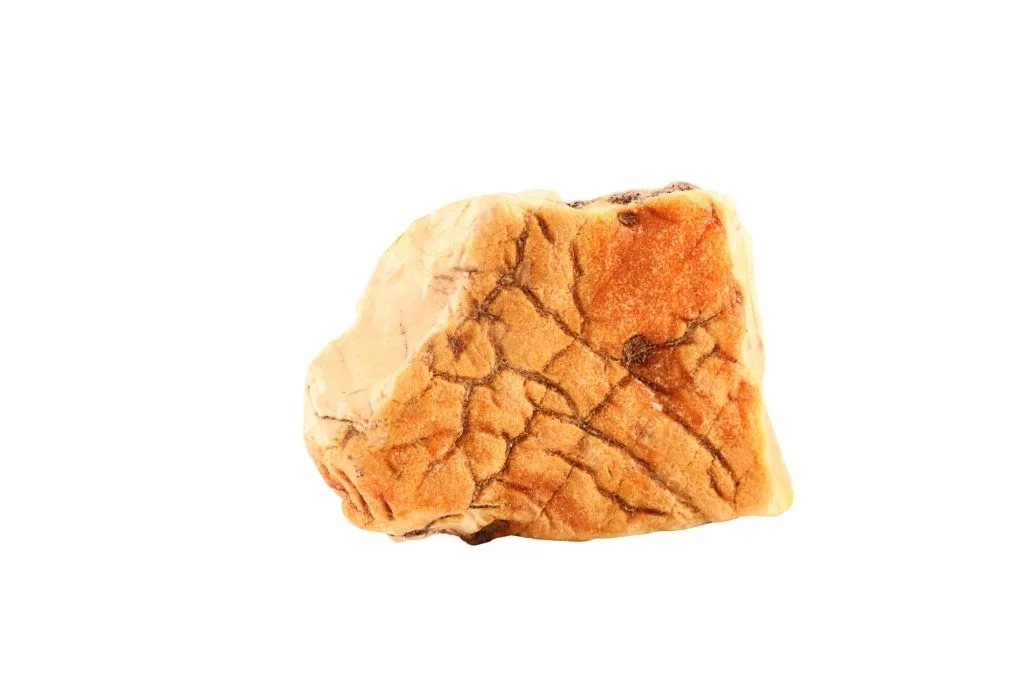Color and Appearance of Bony Amber
Bony Amber, also known as osseous amber, is a unique variety of amber that exhibits a distinctive appearance. This fascinating gemstone typically displays a creamy white to pale yellow color, reminiscent of aged bone or ivory. The color can vary slightly, sometimes presenting hints of light brown or beige tones, depending on the specific specimen.
Structure and Texture
One of the most notable characteristics of Bony Amber is its opaque nature. Unlike the more common transparent or translucent amber varieties, Bony Amber is completely opaque, which contributes to its bone-like appearance. The texture of this material is often described as smooth and waxy, similar to polished bone or ivory. When cut and polished, it can develop a subtle luster that enhances its visual appeal.
Unique Physical Characteristics
Bony Amber stands out due to its internal structure, which often displays a layered or banded pattern. These layers can be faint or quite pronounced, creating an interesting visual effect that mimics the structure of actual bone. Some specimens may also exhibit small inclusions or impurities, adding to their character and uniqueness. The material is relatively lightweight, another trait it shares with fossilized bone.
Notable Features
What truly sets Bony Amber apart is its rarity and unusual formation process. It is believed to result from specific environmental conditions during the amber’s fossilization, possibly involving the interaction with calcium-rich materials. This unique formation process contributes to its distinct appearance and makes it highly prized among collectors and jewelry enthusiasts. Additionally, Bony Amber can sometimes be found with preserved organic inclusions, offering valuable insights into prehistoric life forms.
Historical and Cultural Significance of Bony Amber
Bony amber, also known as osseous amber or bone amber, has been prized for centuries across various cultures. This unique form of amber contains fossilized bone fragments, making it particularly valuable to both collectors and researchers. Ancient civilizations, including the Greeks and Romans, believed bony amber possessed powerful protective properties and often used it in jewelry and talismans.
Metaphysical Associations
In metaphysical circles, bony amber is thought to combine the energetic properties of both amber and bone. It is believed to enhance grounding and protection while also promoting a connection to ancient wisdom and ancestral knowledge. Many practitioners associate bony amber with strength, resilience, and the ability to overcome obstacles.
Traditional and Modern Applications
Traditionally, bony amber has been used in jewelry making, with pieces often passed down through generations as family heirlooms. In modern times, it continues to be popular among collectors and is sometimes incorporated into alternative healing practices. Some people wear bony amber pendants or carry small pieces as worry stones, believing they offer emotional support and protection.
Perceived Benefits
Proponents of bony amber claim it offers various benefits, including pain relief, particularly for joint and arthritic discomfort. It is also believed to boost the immune system, reduce inflammation, and promote overall well-being. Some individuals use bony amber in meditation practices, asserting that it helps them connect with ancient energies and gain insights from the past.
Scientific and Educational Value
Beyond its metaphysical associations, bony amber holds significant scientific value. Paleontologists and researchers study these specimens to gain insights into ancient ecosystems and the evolution of various species. The preserved bone fragments within the amber can provide valuable information about prehistoric life forms and their environments.

